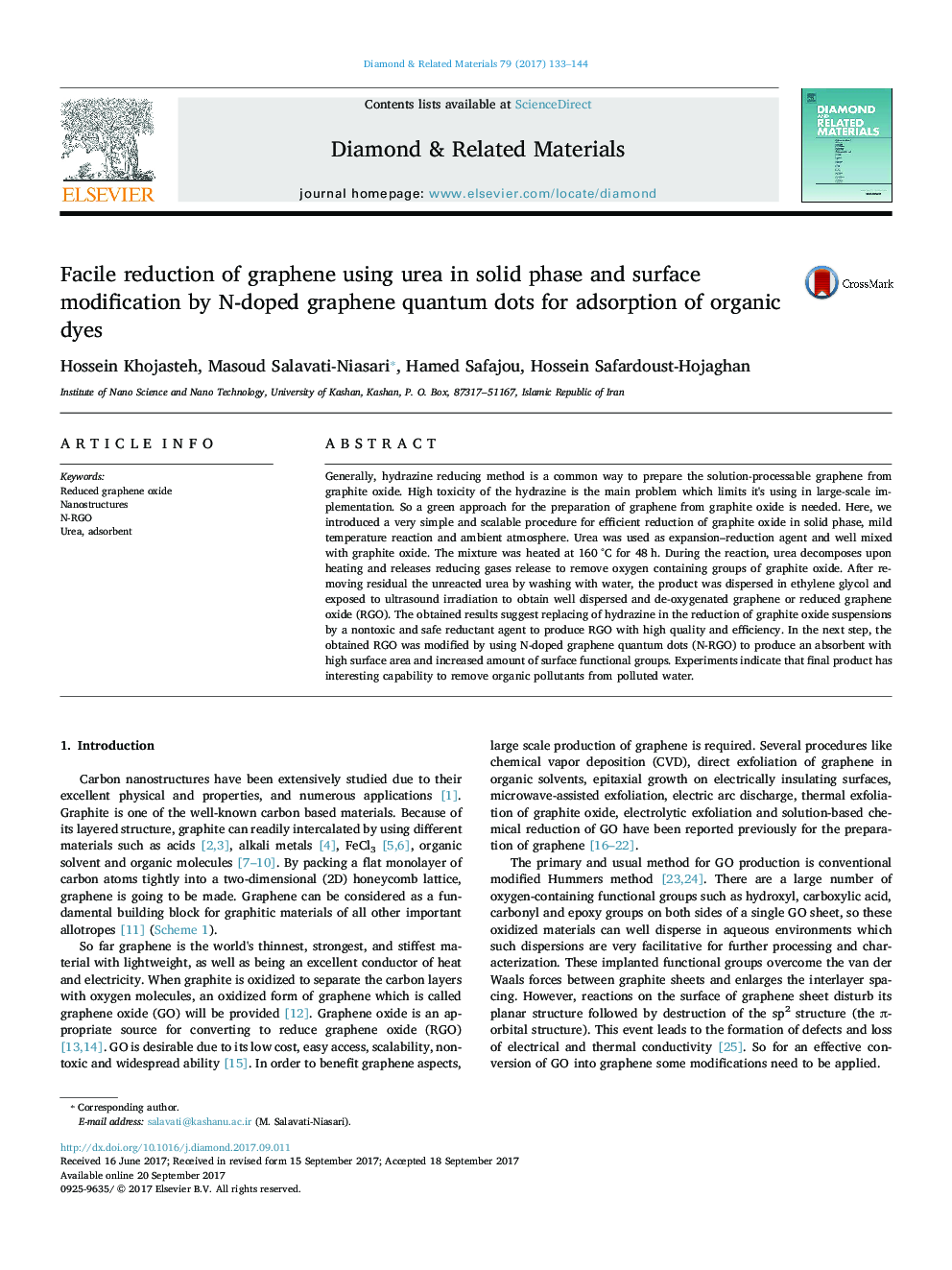| کد مقاله | کد نشریه | سال انتشار | مقاله انگلیسی | نسخه تمام متن |
|---|---|---|---|---|
| 5000602 | 1460752 | 2017 | 12 صفحه PDF | دانلود رایگان |

- Graphite oxide was synthesized by modified hummer method.
- Obtained graphite oxide was pulverized with urea and heated in a close vessel under environment atmosphere.
- Products properties were characterized by XRD, FT-IR, SEM, Raman, TEM and TGA analysis.
- Efficient elimination of labile oxygen containing groups from the surface of GO was occurred.
- TEM analysis was proved single layer graphene production.
Generally, hydrazine reducing method is a common way to prepare the solution-processable graphene from graphite oxide. High toxicity of the hydrazine is the main problem which limits it's using in large-scale implementation. So a green approach for the preparation of graphene from graphite oxide is needed. Here, we introduced a very simple and scalable procedure for efficient reduction of graphite oxide in solid phase, mild temperature reaction and ambient atmosphere. Urea was used as expansion-reduction agent and well mixed with graphite oxide. The mixture was heated at 160 °C for 48 h. During the reaction, urea decomposes upon heating and releases reducing gases release to remove oxygen containing groups of graphite oxide. After removing residual the unreacted urea by washing with water, the product was dispersed in ethylene glycol and exposed to ultrasound irradiation to obtain well dispersed and deâoxygenated graphene or reduced graphene oxide (RGO). The obtained results suggest replacing of hydrazine in the reduction of graphite oxide suspensions by a nontoxic and safe reductant agent to produce RGO with high quality and efficiency. In the next step, the obtained RGO was modified by using N-doped graphene quantum dots (N-RGO) to produce an absorbent with high surface area and increased amount of surface functional groups. Experiments indicate that final product has interesting capability to remove organic pollutants from polluted water.
153
Journal: Diamond and Related Materials - Volume 79, October 2017, Pages 133-144